Serpents, owl men and demon dogs
- Published
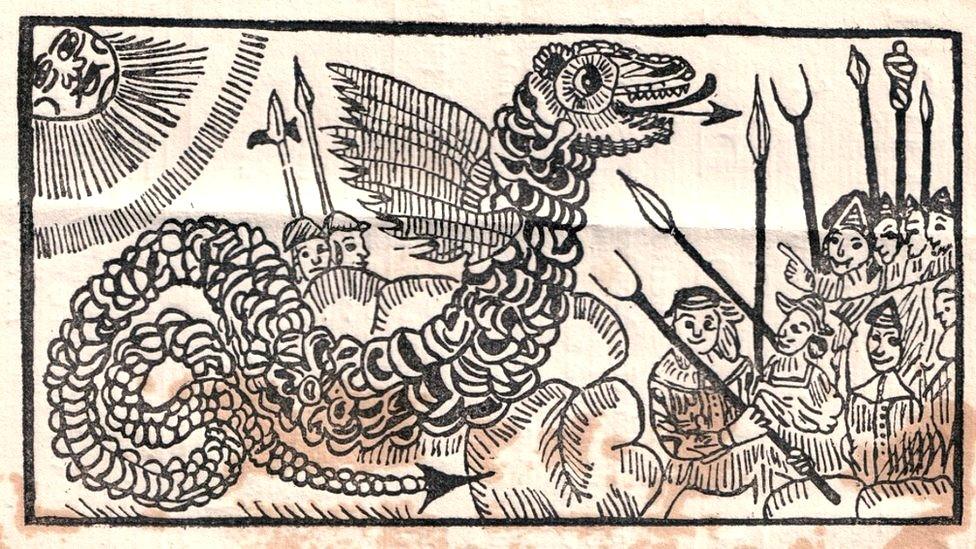
Sarah Perry's book is loosely based around a folktale about the serpent of Henham
Phantom dogs, spring-heeled demons and a half-man, half-owl hybrid - these are just some of the strange and mythical creatures from English folklore that have inspired writers for centuries.
It was while novelist Sarah Perry was driving through Essex with her husband that she first heard the story of a giant serpent, with teeth "very white and sharp".
The myth of a 9ft (2.7m) snake which terrorised the county's cattle had been told for centuries. Inspired, she produced her novel The Essex Serpent, which won her the Waterstones Book of the Year prize last year.
The tale of the giant serpent first surfaced in a pamphlet from 1669, which claims its antics were "attested by many credible persons".
"It's a great unsolved mystery," says Perry, who lives in Norwich. "Some say it was all a hoax, a monster that was hand-built by a man and his son.
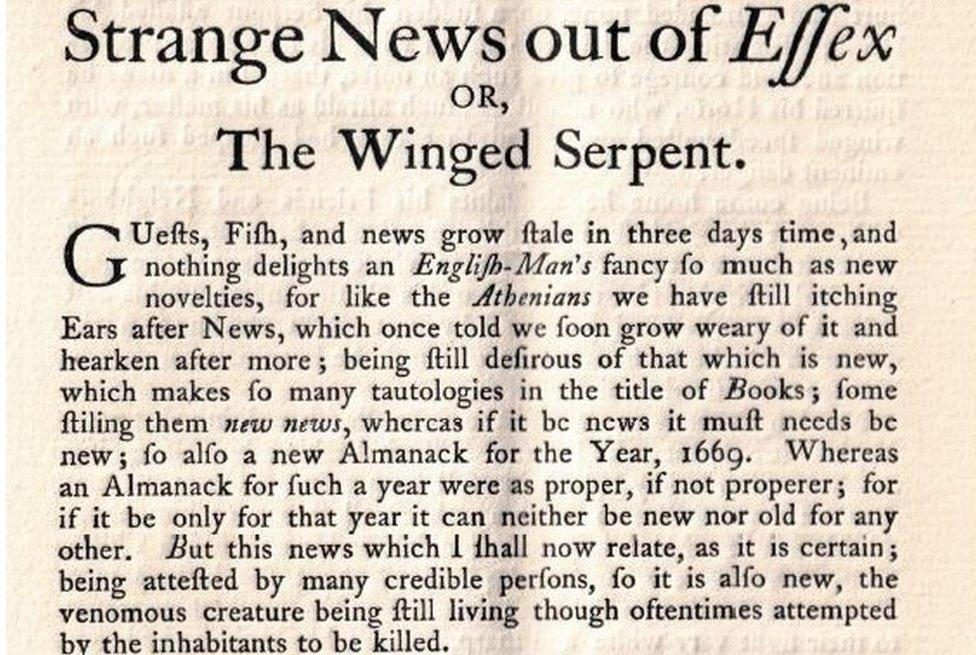
The story of Henham's serpent first surfaced in a pamphlet produced in 1669

It was while novelist Sarah Perry was driving through Henham, in Essex, that her husband told her about the story of story of a giant serpent
"Others say it was a crocodile - some such creature which escaped from the [royal menagerie housed at the] Tower of London and made its way to the Essex marshes."
Regardless of its authenticity, myths and the "dark places that inhabit the corner of your eyes" have always interested her.
She is not alone.
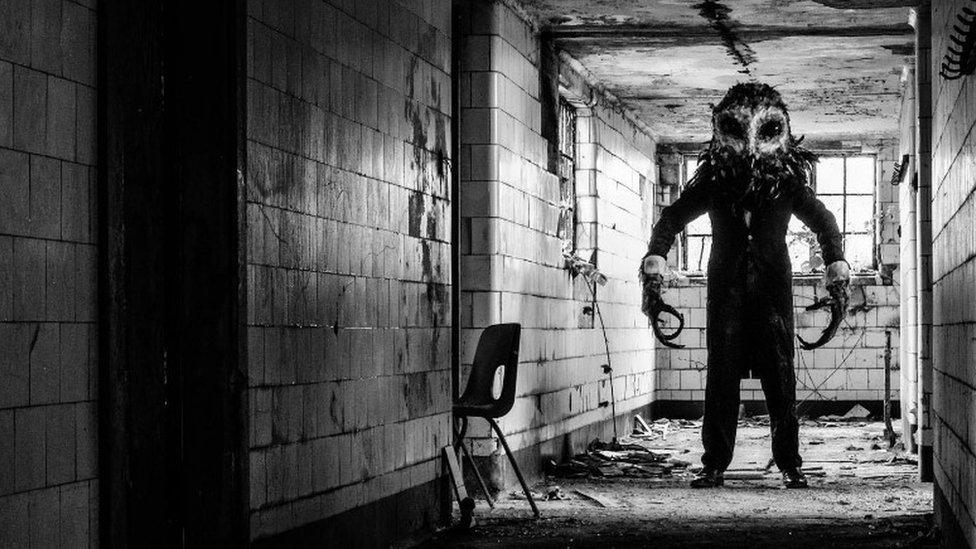
Owlman - which featured in the movie Lord of Tears - was inspired by a Cornish tale
Fellow author Karen Maitland drew on the tales of the Owlman - a relatively modern Cornish story first recorded by paranormal researcher Tony Doc Shiels, external.
According to Shiels, two girls, aged nine and 12, saw the creature hovering near Mawnam church in 1976, describing it as large like a man but with pointed ears and red eyes.
The story party inspired Maitland's work The Owl Killers. She said she wanted to include the Owlman in her thriller for its links to the occult.
"The owl was once a symbol of female power that had been subverted... used by the church and by local cults."
Another writer inspired by local legend was Bram Stoker. The Dracula author had his head turned by the legend of the Lambton Worm, external, which was said to have terrorised the County Durham village by snatching away small children and devouring sheep.
He wrote The Lair of the White Worm, published in 1911, based on the myth of the monster, which was described as large enough to coil itself around a hill.
It was later turned into a Ken Russell film, featuring Hugh Grant in one of his earliest roles, Amanda Donohoe and an unfortunate boy scout.
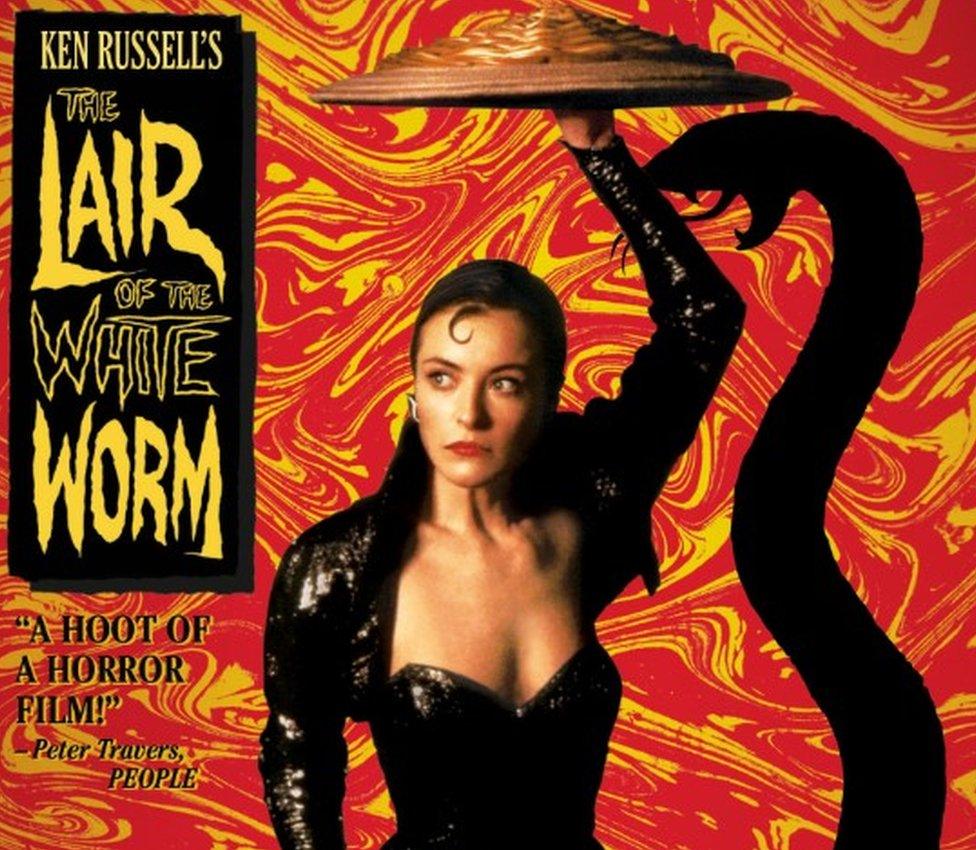
The Ken Russell film Lair of the White Worm starred Amanda Donohoe
Similarly, Arthur Conan Doyle drew on the story of Black Shuck - the demon dog that apparently appeared at churches in Bungay and Blythburgh in Suffolk during a thunderstorm in August 1577.
The animal apparently killed two parishioners and left scorch marks on a church door, and became one of the inspirations for the Sherlock Holmes novel, The Hound of the Baskervilles.
It also inspired Essex writer Martin Newell, who wrote a poem named after the dog.
He says more and more writers are being drawn to mythology "as society becomes more secular and the younger generation, who never go near a church, are looking for mystery in life".
"I grew up with the stories of Black Shuck from my granddad. When I was writing [the poem] someone said to me to 'be careful'," he adds, with a nod to the grip the story still holds on people.

Tales of Black Shuck helped to inspire The Hound of the Baskervilles
Other demonic creatures to be immortalised in print include Spring-Heeled Jack, who struck fear in the hearts of Victorians.
Sightings of the mysterious light-footed man, who could leap over 9ft (2.7m) fences, were recorded from Chichester to Liverpool and were first reported in The Times in the 1830s.
Prof Rohan McWilliam, an expert on Victorian culture at Anglia Ruskin University, said popular Gothic fiction turned monsters such as Spring-Heeled Jack into unlikely heroes - partly in reaction to what was happening culturally at the time.
"In the 19th Century you had a high tide of rationalism and these horror stories, and these monsters, acted as a counterweight to the rationalism," he said.
The devilish ne'er-do-well, who terrorised people and chased a gardener, according to a report from 1838, went on to inspire a novel named after him, written by Philip Pullman.
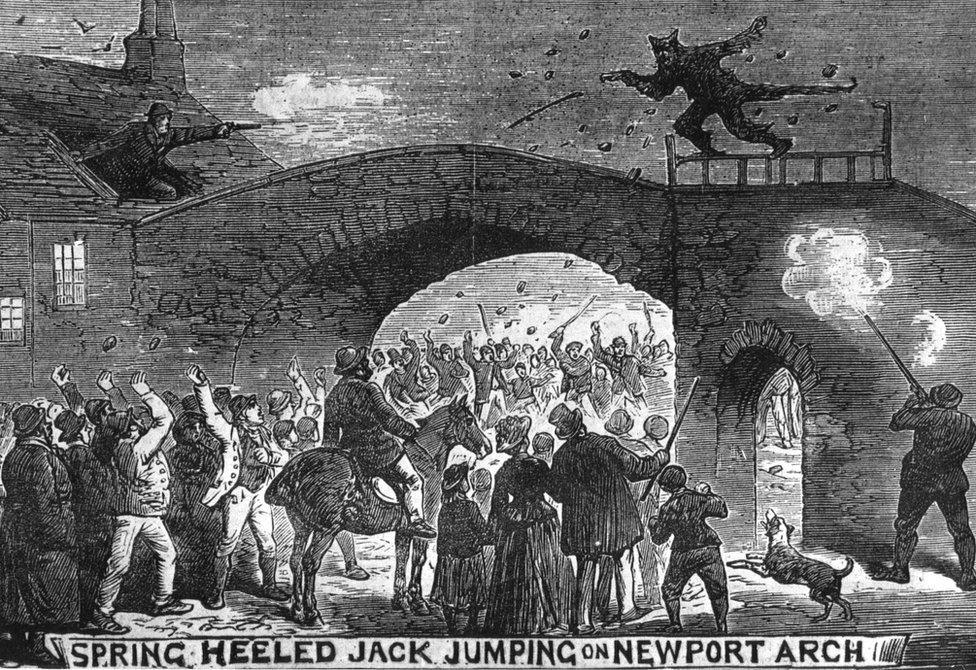
Fantasy writer Philip Pullman penned a novel in 1991 inspired by Spring-Heeled Jack
While the story is almost 200 years old, the motif of a mysterious, shadowy man continues to be used in modern-day tales.
Slender Man, a horror character created on the internet by Eric Knudsen in 2009, is a present-day example of a mythological creature.
"The Slender Man is unique only in the fact that he was generated via online forums," says Shira Chess, assistant professor of mass media arts at the University of Georgia.
"This affected the speed of his spread but not the essence of his story. In many ways, the Slender Man resonates with older styles of storytelling, fairy myths, and other modes of folklore."
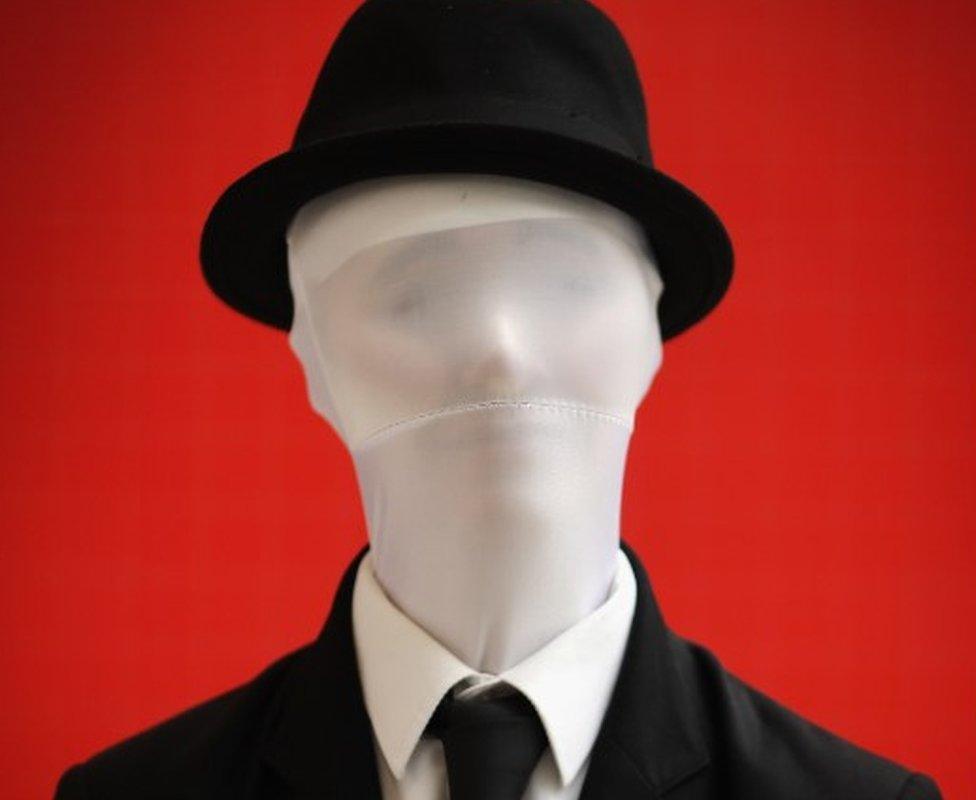
Slender Man is a horror character created on the internet by Eric Knudsen in 2009
Jonathan Downes, a director of the Centre for Fortean Zoology, says even though it was created in the digital world, the Slender Man bears the hallmarks of old-school folklore and looks likely to influence writers in generations to come.
Maitland says novelists, poets and songwriters are likely to continue finding inspiration from these creatures of old and new folklore.
"Ever since man first sat around telling stories these shadowy creatures have been a big part of those stories," she says.
"Writers are drawn to these creatures because they stir something primeval in us."
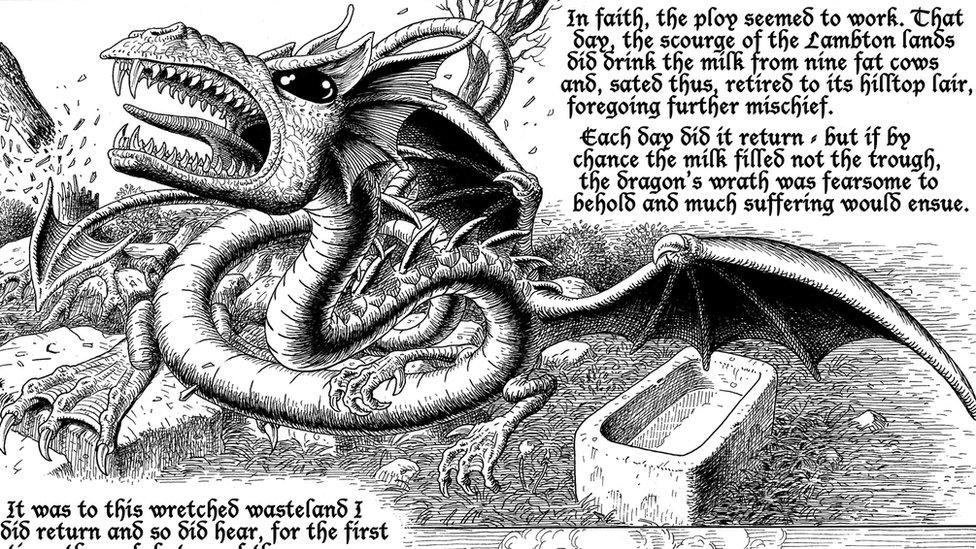
The Lambton Worm was described as large enough to coil itself around a hill